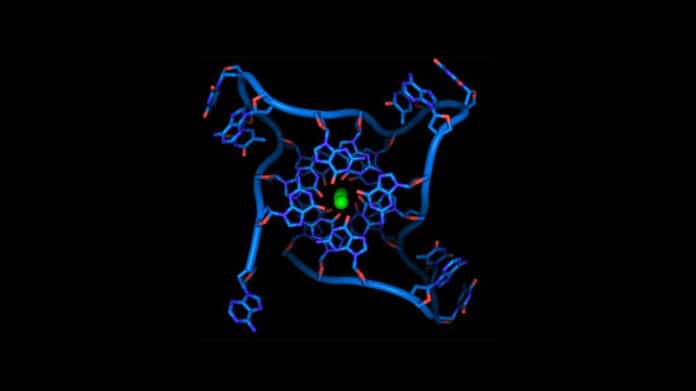Four stranded DNA structures – known as G-quadruplexes, form in regions of DNA that are rich in one of its building blocks, guanine (G).
In a new study, scientists from the University of Cambridge discovered that G-quadruplexes form in preserved tumor tissue/biopsies of breast cancer.
Scientists used their quantitative sequencing technology to study G-quadruplex DNA structures in 22 model tumors. The models were generated by taking biopsies from patients at Addenbrooke’s Hospital, Cambridge University Hospital NHS Foundation Trust, then transplanting and growing the tumors in mice.
During the procedure of DNA replication and cell division that happens in cancer, large regions of the genome can be erroneously duplicated a few times, prompting alleged copy number aberrations (CNAs). The analysts found that G-quadruplexes are common inside these CNAs, especially inside genes and genetic regions that assume a vital job in transcription and, thus, in driving the tumor’s growth.
Professor Sir Shankar Balasubramanian said, “We’re all familiar with the idea of DNA’s two-stranded, double helix structure, but over the past decade it’s become increasingly clear that DNA can also exist in four-stranded structures and that these play an important role in human biology. They are found in particularly high levels in cells that are rapidly dividing, such as cancer cells. This study is the first time that we’ve found them in breast cancer cells.”
Dr. Robert Hänsel-Hertsch, who is now at the Center for Molecular Medicine Cologne, University of Cologne, said, “The abundance and location of G-quadruplexes in these biopsies gives us a clue to their importance in cancer biology and the heterogeneity of these breast cancers.”
“Importantly, it highlights another potential weak spot that we might use against the breast tumor to develop better treatments for our patients.”
Professor Carlos Caldas from the Cancer Research UK Cambridge Institute said: “While we often think of breast cancer as one disease, there are actually at least 11 known subtypes, each of which may respond in different ways to different drugs.”
“Identifying a tumor’s particular pattern of G-quadruplexes could help us pinpoint a woman’s breast cancer subtype, enabling us to offer her a more personalized, targeted treatment.”
By targeting the G-quadruplexes with synthetic molecules, it may be possible to prevent cells from replicating their DNA and so block cell division, halting the runaway cell proliferation at the root of cancer. Scientists identified two such molecules – one known as pyridostatin and a second compound, CX-5461, which has previously been tested in a phase I trial against BRCA2-deficient breast cancer.
Journal Reference:
- Hänsel-Hertsch, R et al. Landscape of G-quadruplex DNA structural regions in breast cancer. Nat Gen; 3 Aug 2020; DOI: 10.1038/s41588-020-0672-8
